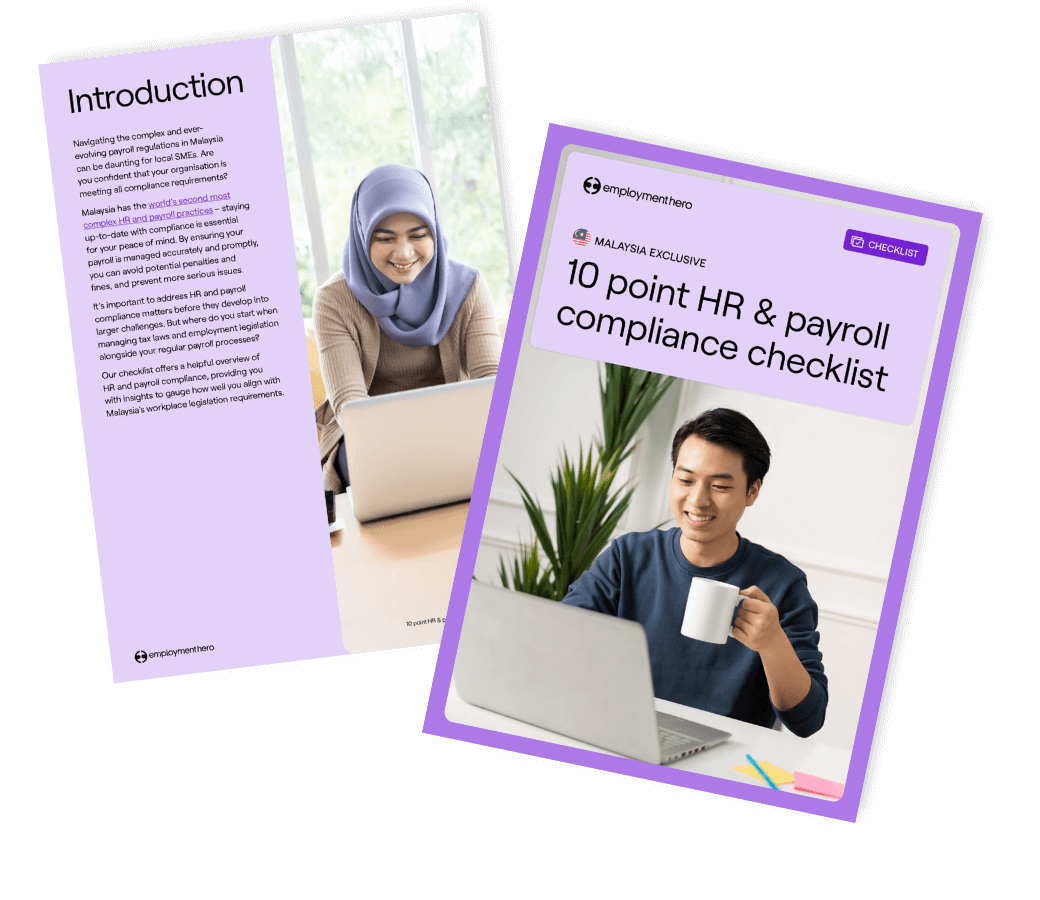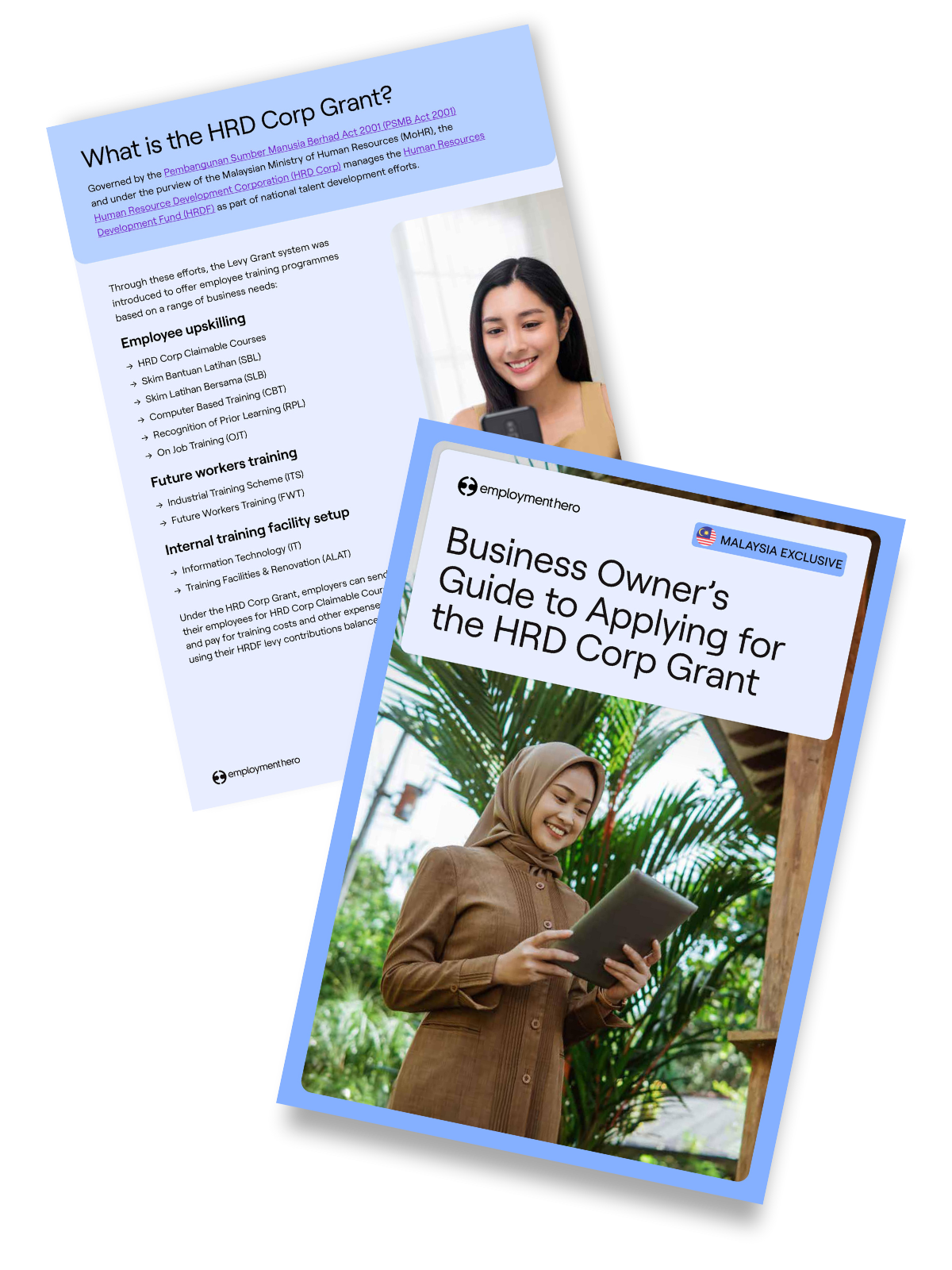The complete interview guide for hiring managers
Published
The complete interview guide for hiring managers
As much as we all wish there was… There’s no magic formula for getting the ‘right hire.’
Recruitment is challenging for all businesses – there’s no simple way around it. However, there are definitely ways to make it better, enjoyable, and significantly easier, and that’s what we’re here to talk about.
In this guide, we cover:
- Types of interviews
- Good interview questions to ask
- Reference checks
- A handy interview checklist
- And more.
Download the guide now.
How much does it cost to hire employees?
The cost of hiring employees in Malaysia can vary depending on several factors, including the employee’s salary, benefits, and other related advertising expenses.
Our recent State of Recruitment report revealed that the average cost to advertise a role in Malaysia was RM708. Job advertising rates have also increased by 121% in the past year — in large due to the rising cost of living, but also because of labour shortages and increased commissions from recruitment agencies or job boards hiking up their posting prices.
Why you should prepare your hiring team
Preparing your hiring team is crucial when it comes to the recruitment process, for a number of reasons. Here are some key reasons why you should ensure your hiring team is well-prepared:
- Consistency: A well-prepared hiring team ensures consistency in the hiring process. When all your team members are on the same page, they evaluate candidates using the same criteria, which helps in making fair and objective hiring decisions.
- Efficiency: Having a prepared team helps to streamline the hiring process. Team members who know their roles and responsibilities work more efficiently, reducing the time it takes to fill a position.
- Improved candidate experience: Candidates often have a better experience when the hiring team is organised and prepared. They appreciate clear communication, timely feedback, and a smooth interview process.
- Legal compliance: Proper preparation helps in adhering to local legislation. Team members need to be aware of what they can and cannot ask during interviews to avoid legal issues.
- Better decision-making: When your team is prepared, they can better evaluate candidates based on the job requirements and company culture fit. This leads to better hiring decisions and reduced employee turnover.
- Alignment with company goals: A prepared hiring team understands the company’s objectives and what kind of talent is needed to achieve them. This alignment ensures that the candidates selected are more likely to contribute to the organization’s success.
- Effective evaluation: Preparing the hiring team includes training them on effective interviewing techniques and the specific skills or qualities to look for in candidates. This improves the quality of evaluations.
- Reduced bias: Training and preparation can help reduce unconscious bias in the hiring process. Unconscious bias can lead to a lack of gender and cultural diversity in your workforce, and can remove equal opportunities for people with various religious beliefs, sexual orientations and differences in ability.
- Feedback and learning: A prepared hiring team can provide valuable feedback to candidates, helping them understand their strengths and weaknesses. This feedback can be a good learning experience for candidates, even if they are not selected.
- Enhanced employer brand: Candidates who have a good experience with your hiring team during the hiring process are more likely to speak positively about your company, even if they are not hired.
- Cost savings: A well-prepared team reduces the risk of making hiring mistakes, which can be costly in terms of training and turnover. Effective hiring can save the organisation money in the long run.
What is the role of a hiring manager?
A hiring manager is the person who will be managing the employee once they are appointed. Quite often, the hiring manager will also initiate the talent search and will be a key point of contact throughout the recruitment and onboarding process, including conducting interviews.
Depending on the structure of the business, there may also be a HR department who will be the first point of contact for applicants and new recruits, but the hiring manager will either work closely with the HR department or external recruiter, or manage the hiring process on the applicant tracking system (ATS).
Ultimately, it’s the hiring manager who has the final say in the candidate selection process, simply because the successful candidate will then become their direct report.

How should you structure your interview process?
Interviewing is a significant part of the recruitment process, and depending on the nature and size of the business, will include several steps. The size and nature of the business and the team will also dictate the interview format, but this is a general look at what the interview process looks like.
Step 1. Defining the role
The first step is to define the role that you are recruiting for. This means setting out the roles and responsibilities, as well who the role will be reporting to, where they will sit in the organisational structure, what tasks they’ll complete in their day-to-day, plus any other skills required to complete the role.
Step 2. Write a stellar job description
To create a job description that stands out on the market, you should use a clear job title which states what the job is, and mention the level and type of role. Bear in mind that you also need to sell reasons why applicants would want to work for you – this is all part of your employer branding. Including your benefits and employee value proposition (EVP) on your job adverts will provide more insight into your role and company.
Not sure where to start? Think about:
- Outlining company highlights
- Sharing possible opportunities for mentorship and professional development
- Outlining all of the benefits and perks your company offers
- Showcasing your culture and cadence of social events
Step 3. Advertise your open role
In order to attract the right applicants, you need to determine where your target candidates actually are. Is it LinkedIn? Social media? Job boards? Are they already working at your company? Will you be using external recruiters? You should assess each avenue and find out what option will work best for your team and potential candidates.
Step 4. Design your interview process
Designing a killer interview process takes time, consideration and flexibility. The interview process will be different depending on whether you’re recruiting an intern, a junior role or a senior leadership position. Regardless of the position you’re hiring for, consider these areas:
- Location of interviews
- Number of interview rounds
- Purpose of interviews
- Who the potential candidates will be meeting with
- Which non-technical questions to ask during the interview process
- Whether potential candidates will be required to complete a task
- Technical questions that are specific to the role
Download our guide for more insights into interviewing.
Step 5. Make the final decision

After the interviews are complete, it’s important to discuss decision making with your team. Once a decision has been taken, you can notify the successful candidate and issue an offer letter. You’ll also need to let the unsuccessful candidate(s) know – it’s good practice to give feedback and let them know the reasoning behind your decision.
After that, you can focus on onboarding your new hire! As a hiring manager, you’ll want to make sure that the prospective candidate you chose to fill the position will be the right employee for the job — from both a skill set match to alignment with your business values and company culture.
What are some tools that can help hiring managers better manage candidates?
Tools can make light work of recruitment. When used well, they can automate and simplify tedious tasks like post jobs adverts, sifting through CVs, and tracking the applicant process.
Our preference is to have as many tools under one roof as possible – this makes recruitment and onboarding smooth, streamlined and enjoyable for both the employer, hiring manager and candidates.
1. Applicant Tracking Systems (ATS)
An ATS is a top tool that can help save heaps of time and energy by managing every step of the recruitment process — from job creation to finding the ideal candidate to hiring and onboarding. 86% of recruiting professionals say that using an ATS has helped them hire better and faster.
Employment Hero has a built-in Applicant Tracking System (ATS) that allows you to seamlessly manage your candidates and post job ads on different job boards — all from within our cloud-based platform. Managing your candidates has never been easier. In addition, by using our Swag jobs board, hiring managers managed to reduce their time to hire by 63%, which means that they were able to onboard new starters 18 days earlier than candidates sourced from other job boards.
2. Social networks
Social media is another great tool for the hiring manager’s toolbox. Whether you’re sourcing candidates, putting the word out about a vacancy, or researching candidates – social media has a lot of power when it comes to recruitment.
It’s also a good idea to get your own employees to spread the word via their own social networks — who knows, you might get a good referral come through!
3. Onboarding software
Onboarding software can help you retain top talent with a great employee onboarding experience. A well run onboarding process can set the tone for employee engagement and support strong employee performance from day one, while a poorly run onboarding process can slow down an employee’s entry to the business, make them doubt their place in the company, and contribute to a higher turnover rate.
Remember, a hiring manager’s job doesn’t end once the new employee starts in their role. In some ways, this is just the beginning. And with the rise of remote work, this presents new challenges for managers in terms of delivering on that team culture and employee experience that they no doubt spoke highly of during the interview and selection process. As more and more people work remotely or in a hybrid way, hiring managers will need to give consideration as to how their direct reports are doing.
But with the right tools, this can be a walk in the park.
Check out our other resources:
Related Resources
-
 Read more: 10 point HR and payroll compliance checklist
Read more: 10 point HR and payroll compliance checklist10 point HR and payroll compliance checklist
Get peace of mind with our 10 point HR and payroll compliance checklist.
-
 Read more: Business Owner’s Guide to Applying for the HRD Corp Grant
Read more: Business Owner’s Guide to Applying for the HRD Corp GrantBusiness Owner’s Guide to Applying for the HRD Corp Grant
Find out if you are eligible for the HRD Corp Grant and how to apply for it here.
-
 Read more: From Hi to Hired: Hire Faster, Hire Smarter.
Read more: From Hi to Hired: Hire Faster, Hire Smarter.From Hi to Hired: Hire Faster, Hire Smarter.
This session will equip you with techniques to streamline hiring, enhance candidate experience.







